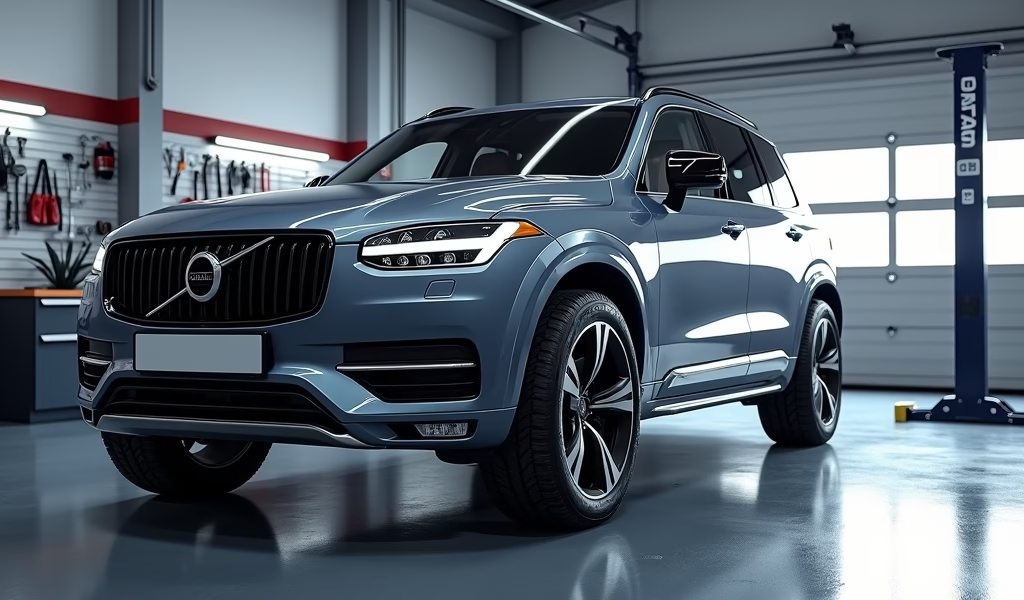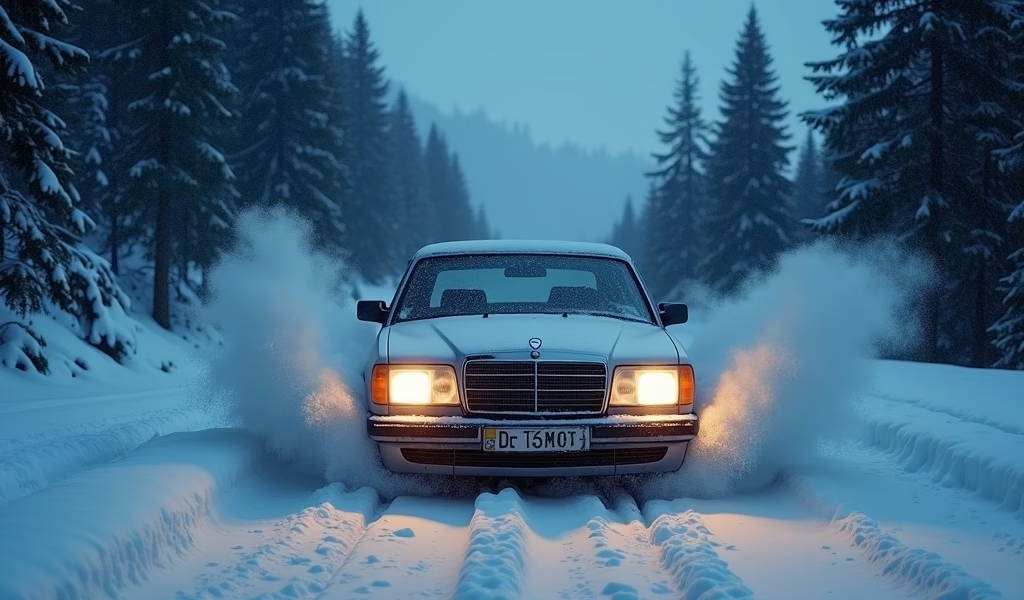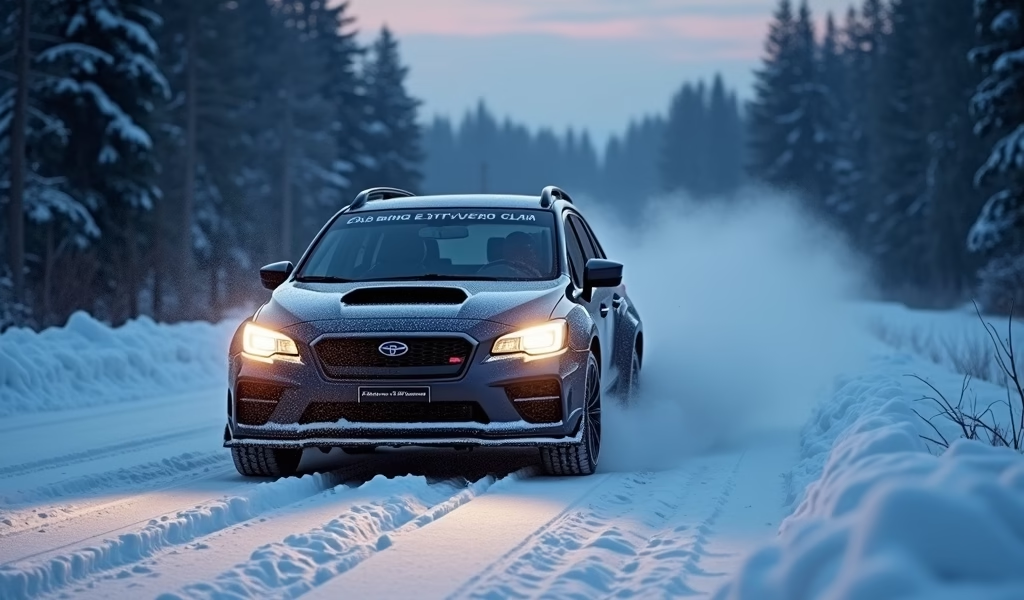Overview
This article details five key factors that make vehicles effective in snow: AWD/4WD systems for better traction, winter tires (the most impactful upgrade), adequate ground clearance, electronic stability systems, and appropriate engine/transmission configurations. The author emphasizes that the best snow performance comes from combining these elements, with winter tires being essential even for AWD vehicles.
Table of Contents
- Winter Driving Challenges: Why Vehicle Choice Matters
- All-Wheel Drive and Four-Wheel Drive Systems: Your Grip Guardians
- Winter Tires: The Ultimate Snow Upgrade
- Ground Clearance and Vehicle Weight: Rising Above the Challenge
- Electronic Stability and Traction Control: Your Digital Co-Pilots
- Engine and Transmission Considerations for Cold Weather
- Finding Your Perfect Snow Companion
- Conclusion
- Frequently Asked Questions
Winter Driving Challenges: Why Vehicle Choice Matters
Winter transforms our familiar roads into slippery challenges. As the snow falls, even experienced drivers feel that familiar tension, wondering if their vehicle can handle what’s ahead. I’ve seen countless drivers white-knuckling their steering wheels, unaware that their vehicle choice significantly impacts their winter driving experience.
After 20 years as an automotive technician specializing in cold weather performance, I can tell you that some cars genuinely excel when the white stuff starts piling up. The difference between good cars for snow and those that struggle isn’t just marketing—it’s engineering that pays dividends when temperatures drop.
Let’s explore five proven treatments that transform ordinary vehicles into winter warriors. These aren’t just minor features—they’re fundamental aspects that separate the truly snow-capable from those that should stay in the garage until spring.
All-Wheel Drive and Four-Wheel Drive Systems: Your Grip Guardians
When wheels spin helplessly on ice, all-wheel drive (AWD) and four-wheel drive (4WD) systems become your most valuable allies. These systems distribute power to all four wheels, dramatically improving traction when roads turn treacherous.
AWD systems operate automatically, constantly adjusting power distribution between wheels. This seamless operation makes them ideal for varying winter conditions without requiring driver intervention. Meanwhile, 4WD systems typically need manual engagement but offer exceptional performance in deeper snow and more extreme conditions.
The differences between these systems matter in real-world driving:
- AWD excels in varying conditions and requires no driver input
- 4WD provides maximum traction in extreme conditions but may need manual engagement
- Part-time 4WD should not be used on dry pavement
- Full-time 4WD works on any surface but may reduce fuel economy
Subaru has earned its snow reputation honestly—their symmetrical AWD system provides exceptional balance and power distribution. The Outback and Forester have become winter icons for good reason. For luxury seekers, Audi’s Quattro system delivers impressive snow performance while maintaining refinement.
However, even the best AWD systems have limitations. They help you accelerate and maintain traction while driving but don’t significantly improve stopping distance on slippery surfaces. That’s where our next treatment becomes essential.

Winter Tires: The Ultimate Snow Upgrade
Driving with all-season tires in snow is like wearing dress shoes on an ice rink. Winter tires represent the single most impactful upgrade for snow driving, often outperforming AWD with all-seasons in many conditions.
The science is fascinating: quality winter tires use specialized rubber compounds that remain flexible in freezing temperatures, combined with unique tread patterns specifically designed to bite into snow and ice. According to independent testing from Tire Rack, the difference is remarkable—stopping distances can be reduced by up to 30% compared to all-season tires.
Most tire experts recommend installing winter tires when temperatures consistently fall below 45°F (7°C), typically in late fall. The transformation winter tires bring to any vehicle in snow is so dramatic that a front-wheel-drive car with winter tires often outperforms an AWD vehicle with all-season tires in braking and cornering.
My customers are often shocked by the difference after their first winter tire installation. The comment I hear most: “I didn’t know my car could handle snow this well!” That’s because winter tires address the fundamental physics of winter driving—creating friction where there’s naturally very little.
Brands consistently earning top marks in winter testing include:
- Bridgestone Blizzak
- Michelin X-Ice
- Nokian Hakkapeliitta
- Continental WinterContact
Remember, winter tires aren’t just for snow—they’re for cold temperatures, even on clear roads. The specialized rubber compounds maintain grip in conditions where all-season tires harden and lose traction.
Ground Clearance and Vehicle Weight: Rising Above the Challenge
When snow piles up, a vehicle’s relationship with the ground becomes complicated. Higher ground clearance allows a car to navigate through deeper snow without getting stuck, explaining why SUVs and crossovers excel in winter conditions.
From my experience in the shop, vehicles with around 8-9 inches of ground clearance hit the sweet spot for most winter driving scenarios. This range provides enough height to navigate moderate to heavy snowfall while maintaining everyday drivability. Popular options like the Jeep Cherokee, Toyota RAV4, and Honda CR-V offer this practical clearance balance.
Weight distribution plays an equally important role. While conventional wisdom suggests heavier vehicles perform better in snow, what truly matters is how that weight is distributed. Cars with balanced weight distribution maintain more consistent traction across all wheels.
I’ve worked on plenty of sedans that surprise their owners with snow capability. Models like the Volvo S90 and BMW 3-Series with xDrive combine reasonable clearance with excellent weight distribution, making them surprisingly capable despite their lower profile.
For those navigating mountainous regions or areas with consistent heavy snowfall, vehicles like the Subaru Forester, Jeep Grand Cherokee, and Toyota 4Runner provide that extra clearance margin that makes the difference between making it home and calling for a tow.
Electronic Stability and Traction Control: Your Digital Co-Pilots
Modern vehicles come equipped with sophisticated electronic systems that act like attentive co-pilots during treacherous winter driving. These aren’t just marketing gimmicks—they’re engineering solutions that make real differences in challenging conditions.
Traction control systems detect wheel spin and automatically reduce power or apply braking to specific wheels to maintain grip. Electronic stability control goes further by helping maintain directional control during skids—particularly valuable when encountering black ice or sudden slippery patches.
The evolution of these systems over my career has been remarkable. Early versions were crude, often cutting power entirely when detecting slip. Modern systems are nuanced, making microsecond adjustments that maintain momentum while preventing the loss of control. According to research from the Insurance Institute for Highway Safety, electronic stability control reduces fatal single-vehicle crash risk by about 50%.
Key electronic systems that enhance winter driving include:
- Traction Control System (TCS): Prevents wheel spin during acceleration
- Electronic Stability Control (ESC): Helps maintain directional control during skids
- Anti-lock Braking System (ABS): Prevents wheel lock during braking to maintain steering
- Hill Descent Control: Automatically manages speed on steep, slippery declines
- Brake Assist: Provides full braking power during emergency stops
Vehicles from Volvo, Mercedes-Benz, and Genesis feature particularly advanced stability systems. The Volvo XC60’s comprehensive stability control makes it exceptionally forgiving in slippery situations, while vehicles like the Subaru Outback combine these electronic aids with mechanical advantages for outstanding winter performance.

Engine and Transmission Considerations for Cold Weather
Not all engines face winter’s chill with equal resilience. In my decades in the shop, I’ve seen how powertrain design significantly impacts cold-weather performance.
Modern direct-injection engines typically start reliably in cold weather, but diesel engines can struggle in extreme cold without block heaters or other cold-weather packages. If you’re in areas with temperatures regularly dropping below zero, this consideration becomes crucial.
Turbocharged engines offer an interesting winter advantage—they deliver more low-end torque, which helps with smooth starts on slippery surfaces without excessive wheel spin. The Ford F-150 with EcoBoost and Mazda CX-5 with turbocharged options demonstrate this benefit beautifully.
Transmission design also impacts winter drivability:
- Automatics with snow modes adjust shift patterns to minimize torque delivery
- CVTs (Continuously Variable Transmissions) provide smooth power delivery ideal for slippery starts
- Manual transmissions offer direct control but require experienced handling in snow
- Dual-clutch automatics sometimes struggle with low-speed maneuverability in snow
The Toyota RAV4 Hybrid combines its efficient powertrain with snow-friendly electronic controls for impressive winter performance. Hybrid vehicles often perform surprisingly well in winter, as their electric motors deliver instant, controllable torque that helps with traction.
Don’t overlook cold-weather features that enhance comfort and safety. Remote starters, heated mirrors, windshield wiper de-icers, and heated steering wheels aren’t just luxuries—they improve visibility and control in winter conditions.
Finding Your Perfect Snow Companion
Winter driving doesn’t have to induce anxiety. With the right combination of these five treatments, nearly any journey through snow-covered landscapes can become manageable and even enjoyable.
For those living in areas with frequent heavy snowfall, an AWD/4WD vehicle with good ground clearance, equipped with winter tires and modern stability systems represents the gold standard. The Subaru Outback, Toyota RAV4, and Honda CR-V hit this sweet spot while remaining practical year-round vehicles.
For occasional snow drivers or those on tighter budgets, adding winter tires to a front-wheel-drive vehicle with good traction control can deliver impressive capability without the expense of AWD. I’ve had customers amazed at how their Toyota Camry or Honda Civic transforms with proper winter rubber.
When evaluating a potential winter vehicle, prioritize these features:
- AWD or 4WD system with proven snow performance
- At least 7-8 inches of ground clearance for moderate snow
- Modern stability and traction control systems
- Cold-weather packages that include engine block heaters in extreme climates
- Sufficient space for winter gear and emergency supplies
Remember that even the most snow-capable vehicle requires proper maintenance to perform at its best in winter. Regular checks of your battery, fluids, and tire pressure as temperatures drop ensure your vehicle’s snow-friendly features work as designed when you need them most.
Conclusion
Finding the right car for snow doesn’t require specialized knowledge—just attention to the features that genuinely matter. The best snow vehicles combine mechanical advantages like AWD and ground clearance with proper winter tires and sophisticated electronic aids.
After working with countless vehicles in winter conditions, I’ve seen how dramatic the difference can be between well-equipped and poorly-prepared cars. The right vehicle transforms winter driving from a white-knuckle experience into a confident journey.
Whether you choose a Subaru Outback, Toyota RAV4, Honda CR-V, or equip your current vehicle with winter tires, the key is understanding that snow capability comes from a combination of features working together—not just a single “winter mode” button.
Winter’s beauty deserves to be enjoyed rather than feared. With the right vehicle properly equipped for snow, those winter roads transform from obstacles into opportunities for adventure. Stay safe, stay confident, and enjoy the winter wonderland from behind the wheel of a truly snow-capable vehicle.
Frequently Asked Questions
Which is better for snow: AWD or 4WD?
AWD is generally better for everyday winter driving as it operates automatically and works well on varying surfaces. 4WD provides more traction in extreme conditions but typically requires manual engagement and may not be suitable for all surfaces.
Can front-wheel drive cars perform well in snow?
Yes, front-wheel drive cars equipped with winter tires often outperform AWD vehicles with all-season tires. The front-engine weight over the drive wheels provides decent traction when properly equipped.
Are winter tires really necessary if I have AWD?
Yes, winter tires are crucial even with AWD. AWD helps with acceleration and maintaining traction while moving, but winter tires improve braking and cornering which AWD doesn’t address.
What SUVs perform best in heavy snow?
Subaru Forester, Jeep Grand Cherokee, Toyota 4Runner, and Volvo XC90 consistently rank at the top for heavy snow performance. They combine high ground clearance, sophisticated AWD/4WD systems, and advanced stability controls.
How much ground clearance do I need for driving in snow?
For moderate snowfall (4-6 inches), a minimum of 7-8 inches of ground clearance is recommended. For areas with heavier snowfall or unplowed roads, 8.5+ inches provides better capability.

